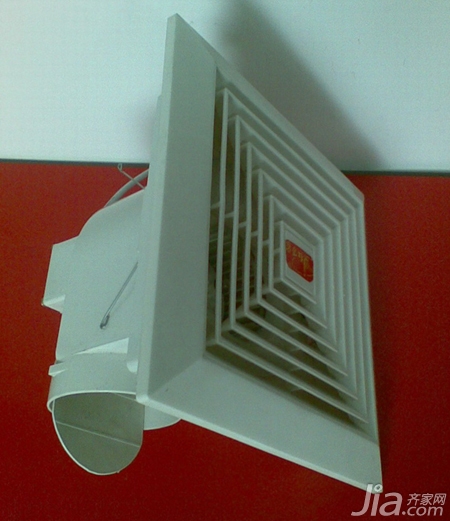Ventilating Fan Encyclopedia: basic parameters of ventilation fan

Exhaust Fan Encyclopedia: Essential Parameters of Ventilation Fans
1. Airflow: This refers to the amount of air that a ventilation fan can move or supply in a given unit of time. In technical terms, airflow is also known as "air volume." For ventilation fans, it's defined as the volume of air delivered by the impeller per unit time when the static pressure is zero, under rated voltage and frequency conditions. The standard units are cubic meters per hour (m³/h) or cubic meters per minute (m³/min).
2. Power: The power consumption of a ventilation fan is measured by the input power of its motor. This is typically evaluated while testing the airflow. The unit used is Watts (W). Understanding the power rating helps determine the energy efficiency and performance of the fan.
3. Pressure: This is the difference in air pressure between the inlet and outlet of the fan. The pressure rating for a ventilation fan is measured at zero airflow when the system is operating under normal conditions, with rated voltage and frequency. It is usually expressed in Pascals (Pa).
4. Noise: The noise produced by a ventilation fan comes from various sources, including electromagnetic, mechanical, and aerodynamic factors. Aerodynamic noise includes rotational and turbulence-related sounds, which are measured in decibels (dB). A sound level meter is commonly used to measure noise levels. This device consists of a microphone, an impedance converter, an amplifier, a weighting network, a meter circuit, and a power supply.
Noise can have negative effects on human health, especially when it exceeds acceptable limits. According to China's Environmental Noise Pollution Prevention and Control Law, residential and cultural areas should not exceed 55 dB during the day and 45 dB at night. In mixed-use areas, the limit is 60 dB during the day and 50 dB at night. Therefore, office environments must ensure that noise levels remain within these thresholds to maintain a comfortable working atmosphere.
5. Performance Curve: When a ventilation fan operates under rated voltage and frequency, its main performance parameters can be visually represented through a curve. This is known as the fan’s performance or characteristic curve. It typically shows the relationship between airflow and pressure, ranging from free exhaust (no airflow) to full load (zero airflow).
Key Points:
- Ventilation Fan Wikipedia: What is a ventilation fan?
- Ventilation Fan Encyclopedia: Classification and types of ventilation fans
- Ventilation Fan Encyclopedia: Where are intelligent ventilation fans used?
Promotional Information:
- Ceiling Mall Top 5: Integrated ceiling ventilation series
- Gree Ultra-Quiet Powerful Ventilation Fan Special: 188 yuan/each
- NOYOK NH30-03 Kitchen Exhaust Fan: 154 yuan/each
- Xinfei Integrated Ceiling Liuye Ventilation Fan Special: 128 yuan/each
- NOYOK Integrated Ceiling Ventilation Fan Special Price: 128 yuan/each
- Gree Ultra-Quiet Aluminum Frame Ventilation Fan: 188 yuan/each
Ventilation fan, integrated ceiling, electrical, kitchen ceiling
Film faced plywood
Shangdong Oushibao New Materials Co.,Ltd , https://www.oushibaomgo.com